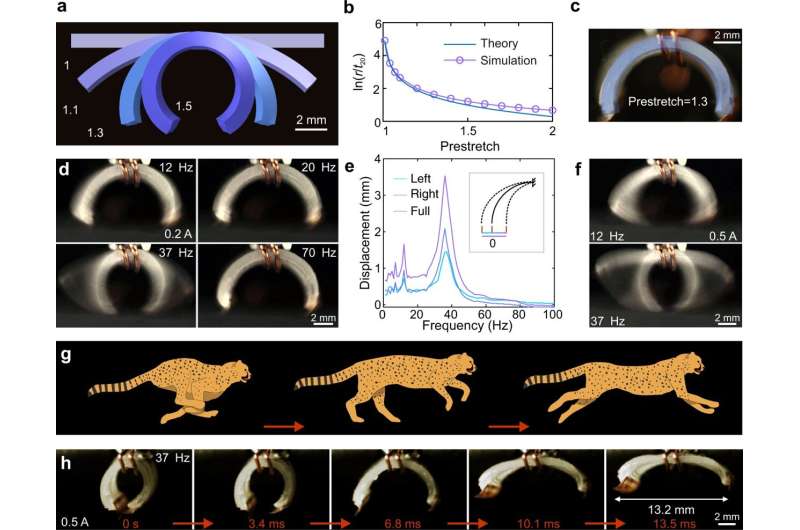August 10, 2022 report
Watch tiny electromechanical robots that are faster than cheetahs for their size

A team of researchers at Johannes Kepler University, in Austria, has developed a series of tiny, steerable electromechanical robots that can walk, run, jump and swim at high speeds for their size. In their paper published in the journal Nature Communications, the group describes how they built their robots and suggests possible uses for them.
As the researchers note, many animals can move quickly—cheetahs, for example, or gazelles. These traits have evolved to help the animals either capture prey or elude capture by predators. Creating robots with similar speed capabilities has been a goal of scientists for many years, but achieving it has proven to be difficult. In this new effort, the researchers built a series of robots using soft, tiny electromagnetic actuators with embedded liquid metal coils that are fast for their size.
To make their robots, the researchers printed liquid metal coils onto different substrates that had different desirable characteristics, such as bendability. The coils were printed in a way that would allow different parts of the substrate to be manipulated in a desired way—bending just one part, for example, could allow for a back end to swish like a tail when swimming like a fish. Bending other parts allowed for walking, jumping and steering. The researchers also added other elements to enhance performance, such as sawtooth or L-shaped feet. All of the robots were controlled using a magnetic field and powered via a tether or battery pack.
The researchers used body lengths per second (BL/s), which allows for comparisons with not just other tiny robots, but robots of all sizes, and even animals. A formula I racecar, for example, can move at approximately 50 BL/s.
In testing their robots, the researchers found that their postage-stamp-size tethered running robot could move at approximately 70 BL/s on its best surface and approximately 35 BL/s on arbitrary surfaces—its untethered robot, burdened with a battery pack, could only manage 2.1 BL/s. They also found their tethered swimming robot could swim at approximately 4.8 BL/s. To put the results into perspective, a cheetah runs at between 20 and 30 BL/s.
More information: Guoyong Mao et al, Ultrafast small-scale soft electromagnetic robots, Nature Communications (2022). DOI: 10.1038/s41467-022-32123-4
© 2022 Science X Network


















